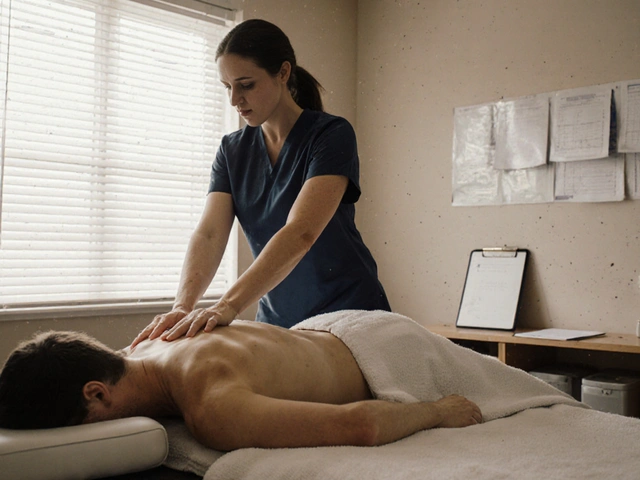Myofascial Release for Dogs: Relieve Pain and Improve Mobility
Fascia—thin connective tissue—can tighten and hide pain in dogs, and myofascial release often unlocks mobility faster than stretching alone. You can spot tight fascia when your dog favors a side, drags a paw, resists turning, or seems stiffer after rest. This page explains what myofascial release does, how sessions usually go, and safe DIY options you can try at home.
Myofascial release is a gentle hands-on method that eases tension in the fascia and the muscles it wraps. Therapists use slow, steady pressure to find spots that feel glued or ropey and hold until the tissue softens. For dogs, sessions focus on common trouble zones: shoulders, hips, lower back, and the neck. The goal is better range of motion, less pain, and smoother movement rather than quick stretching.
What to expect from a session
A typical session lasts 30–60 minutes. The therapist will watch your dog move, palpate areas that feel tight, and use light pressure while the dog relaxes—often lying or sitting. Dogs often yawn, lick their lips, or shift weight while tissue releases; these are good signs. Most dogs tolerate myofascial work well, but a professional who knows animal behavior adjusts pressure and pace to avoid stress.
Results vary. Some dogs seem looser right away and walk with a longer stride the same day. Other cases need a few treatments spaced over weeks, plus changes in exercise or posture. If your dog has surgery, acute injury, or certain medical conditions, check with your vet before booking a session.
Easy, safe techniques you can try at home
Start gently. Use your palms and fingers to feel for tight, springy, or rope-like bands under the skin. Apply soft, sustained pressure for 20–60 seconds and wait—do not rub quickly. If your dog relaxes or moves, ease off and praise them. Try a soft rubber ball or rolling tool for broad areas like the shoulder blade, but never press hard into tender spots.
Work short sessions—5 to 10 minutes—after a light walk when muscles are warm. Keep a calm voice and breaks for treats. Track progress with simple tests: watch stride length, willingness to jump, and how easily your dog lies down and stands up. If you see increased pain, limping, swelling, or changes in behavior, stop and call your vet.
Finding a skilled canine therapist matters. Look for practitioners with animal-specific training, good references, and insurance. Ask for a demo session and a clear plan that includes home exercises. Myofascial release pairs well with strengthening work, controlled walks, and sometimes massage or physiotherapy.
Aim for one to three short sessions per week at first, then cut back as your dog improves. Keep simple notes and photos to track changes, and check progress with your vet or rehab specialist.
Used right, myofascial release helps dogs move easier and feel better with low risk. Start slow, get professional guidance for complex problems, and use these techniques to add comfort and mobility into your dog's life.

Unseen Benefits of Myofascial Release: What You Need to Know
Dive into the world of myofascial release therapy and uncover its surprising benefits. This therapy isn't just about muscle relaxation; it addresses fascia, the intricate network beneath our skin, offering relief from chronic pain and improved mobility. Learn the science, get practical tips, and discover how regularly releasing fascia can enhance your daily life without needing fancy equipment or techniques.

Unlocking Wellness: A Deep Dive into Myofascial Release Therapy Benefits
Delve into the transformative world of Myofascial Release Therapy, a breakthrough approach in physical therapy that promises not just pain relief but a host of wellness benefits. This therapy focuses on relieving tension and pain by releasing the tightness in the fascia, the connective tissue around muscles and organs. Through this article, readers will explore what Myofascial Release entails, the science behind it, its extensive benefits, and practical tips on implementing these techniques. The journey through Myofascial Release Therapy is not just about combating pain, it's about embracing an improved quality of life.

Rediscover Health and Wellness with Medical Massage
Nov, 16 2025



